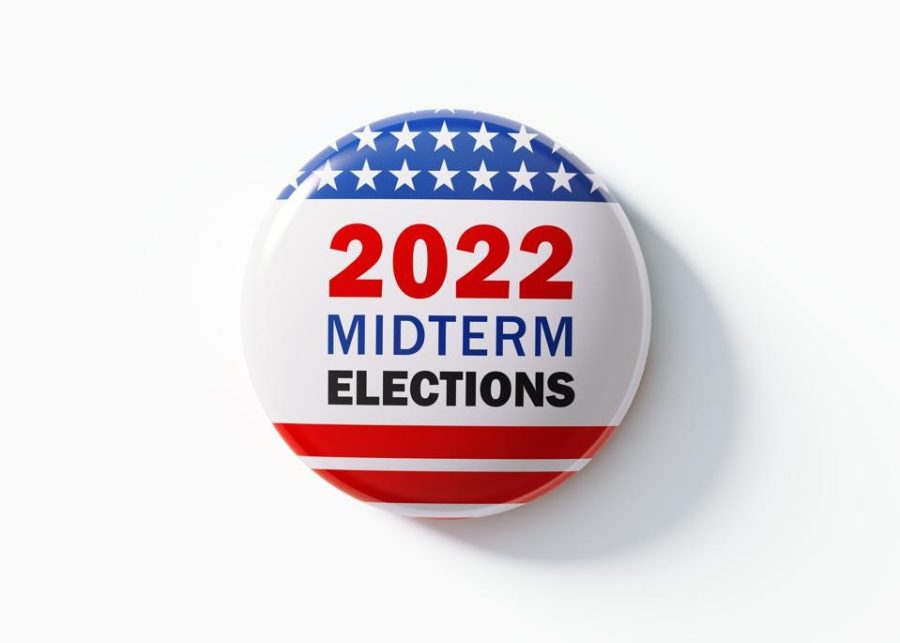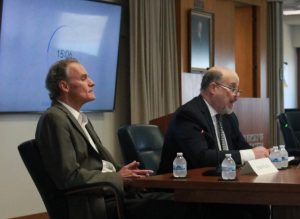Explained: Midterm election results
November 22, 2022
The 2022 midterm elections took place two weeks ago, on Nov. 8. As the second most participated in a midterm election since 1914, voting in this election was a priority many Americans shared. Not only were there a variety of important issues influencing the actions of voters, this election included major races in Congress.
Congressional elections determine who will represent each state in the House of Representatives and the Senate, and decide which party holds the majority for the next two years. All 435 seats in the House were up for reelection and one-third of the Senate. Before the election, Republicans held 50 seats in the Senate, and Democrats held 48, leaving two Independent Senators and Vice President Kamala Harris with the tie-breaking vote.
Results of the Senate races show it is staying under Democratic control, though the margins are still small. Democrats now hold 50 seats, and Republicans with 49. The one temporarily vacant seat is from Georgia’s Senate race where, according to The Associated Press, it was too close to call. Democratic Senator Warnock of Georgia and Republican candidate Walker will go into a second voting round in December to determine a majority vote.
The Senate race in Wisconsin was won by incumbent Senator Ron Johnson, who defeated Democratic Lieutenant Governor Mandela Barnes by one percentage point. According to the Milwaukee Journal Sentinel, Branes won La Crosse County with 55.7% of the total votes. The race was one among a handful of tight Senate races to determine which party will hold the majority.
As of September 2022, the Democratic party held 220 seats in the House of Representatives, and the Republican party held 212, and three vacancies bring the total to 435. To obtain a majority, one party must hold at least 219 seats. Following the 2022 midterms, the Republican party reached that number, regaining control of the House for the first time since 2018.
Of the 435 seats in the House of Representatives, eight of them are from Wisconsin. Voters elected a candidate from their respective district to serve in the U.S. House. La Crosse falls into District 3 where a flip to a GOP representative took place. Republican Derrick Van Orden defeated Democratic state Senator Brad Pfaff in a 52% to 48% vote. This election of a Republican representative was one of six, while district two and district four elected a Democratic representative.
Many gubernatorial elections also took place this midterm, 36 governorships and 30 state attorney general offices are on the ballots. Wisconsin was one of the states with both positions on the statewide ballot. Incumbent Democratic Governor Tony Evers defeated Republican candidate Tim Michels by 3.4%. The attorney general election results show Democratic candidate Josh Kaul winning against Republican candidate Eric Toney. These results mean Wisconsin remained a politically divided state, with a Democratic Governor and a Republican-led state legislature.
Wisconsin also elected a Secretary of State this midterm. The race was between Republican candidate Amy Loudenbeck and Democrat Incumbent Doug La Follette. Results from Nov. 8 showed that La Follette defeated Loudenbeck by .29 of a percentage point, low enough for Loudenbeck to request a recount. As of Nov. 21 Loudenbeck conceded that she has lost the race, deeming La Follette the Secretary of State.
Throughout the country 88 state legislative chambers held elections, Wisconsin being one of them. The Wisconsin State Assembly has 99 seats determined by districts, and each one was up for reelection. Voters in La Crosse reelected Democratic incumbent Jill Billings against Republican candidate Chris Woodard. To find which district you live in look here.
Despite the lower voter turnout, midterms are as equally as important as presidential elections. Midterm elections have the ability to change the direction of the country. Because these elections happen in the middle of a presidential term, changing the makeup of Congress impacts how the serving president will be able to govern during the second half.







